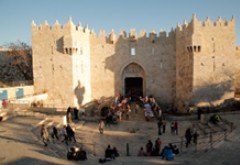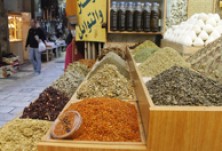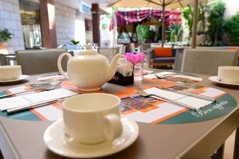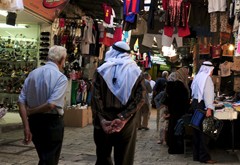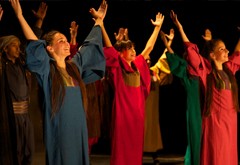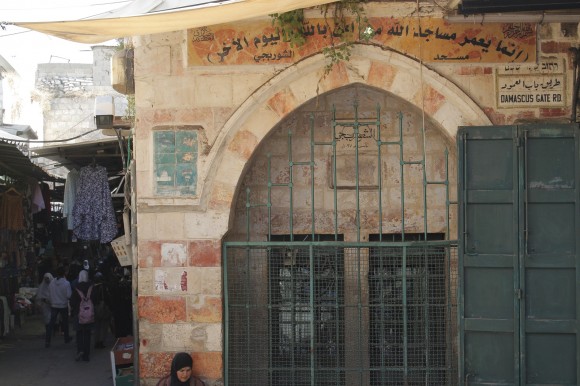Sabil and Mosque al-Shurbaji is the first station of this trail. It is accessed by entering the Old City to the junction of Khan al- Zait, al-Jabsheh, Harat al-Sa’diya, and al-Wad streets. The fountain is on the western side at the beginning of the northern al-Wad Street.
Sabil al-Shurbaji was declared a religious endowment (Waqf) in 1686 AD (1097 H), during the Ottoman era, as the records of the Jerusalem Shari’a Court indicate, and from reading and analyzing a commemorative plaque on the northern side of the sabil. It is not easy to read the inscription on the plaque, which has faded away with time, and because kiosks of peddlers obscure its location. The plaque reads:
‘Abed al-Karim al-Shurbaji built the sabil so that thirsty people might drink, hoping through this deed for rewrd, blessing and charity from Allah the Gloroius. Beloved respectful one, set out to date it, and say (it is) a drink from Paradise or a spring.’
Sabil’s Founder and brief description
The Sabil’s founder is ‘Abed al- Karim al-Shurbaji, who seems to have been wealthy and to have lived in Jerusalem towards the end of the 17th century AD (11th century H) and loved charity work. The Sabil is composed of a single room with a double window on the northern side, covered by a shallow pointed dome. It is simple, reflecting 17th century architecture on the one hand, and the humble capabilities of a generous person who wished to give freely for the benefit of others on the other hand. This Sabil is not a Sultanate or a Royal establishment to be ornately decorated, but what draws attention is that the stores adjacent to the Sabil are held as religious endowments (Waqf) for its renovation and upkeep. Al-Shurbaji organized a regular supply of water for the Sabil and installed a cistern in an adjacent store to supply it with water during droughts.
Humanistic Perception of the Donor
It is noteworthy that ‘Abed al-Karim al-Shurbaji presented the Sabil to all residents and visitors of the city without exception or discrimination, mentioning in the inscription that the Sabil is for ‘all thirsty people passing by.’ The Waqf document stated that ‘any person, coming or going, present or absent, old and young, strong or weak, male or female, from all Allah’s (God) creations, among people without distinction, may drink from it.’ This was also emphasized in another part of the Waqf notification: ‘Every person, coming or going, male or female, old or young, may drink from it and approach its blessed trough.’ This is a humanistic, all-inclusive outlook to charity.
It is not known for sure when the Sabil stopped providing water for people, but the writer assumes that this happened towards the end of the 19th century or the beginning of the 20th century, and this action was preceded by changes regarding the specifications and functions of the Sabil.

